August 29, 2020
My hurried dash to the Beijing airport in early February was cloaked in pre-dawn darkness.
More and more flights out of China were being cancelled and I had just a few hours to make it to Hong Kong before a quarantine was declared there — and with it, potentially more barriers at the border.
More restrictions threatened on the mainland, too, as Chinese officials announced new travel rules and lockdowns daily. At the time, the strange new disease seemed to be surging across China, while the rest of the world — with few cases — mostly considered this coronavirus to be Asia's problem.
As my taxi cruised along frozen streets, bright red lanterns marked a Lunar New Year holiday no one in Beijing was in the mood to celebrate. In a metropolis of 20 million people, it had become rare to meet a single one.
Cities like this — frightened and forsaken — would become commonplace worldwide. But in early February, the situation in Beijing seemed unthinkable. And it was unsettling.
The virus was still a mystery. No one knew exactly how it had started or how easily it could be transmitted. Symptoms were unclear, reliable tests rare, treatments distant. At this point, the flu-like bug didn't even have a name.
As I arrived at the air terminal, I had no idea if I might already be infected with what would soon be christened COVID-19.
Was I sick and didn't know it yet?
Public pushback became as contagious as the virus, even in countries where dissent is often crushed.
That was the question I saw in the frightened eyes of many in long lines at the counters of airlines still operating flights out to Europe or North America, their belongings piled so high it suggested an exodus. These were mostly expats living in China, families of diplomats and foreign workers, uprooted by an unexpected health crisis and pushed to leave by worried calls from friends abroad.
So much was unknown at the time. Yet as the virus that was first identified in a single market in China spread across borders and continents, the human reactions it triggered were to become remarkably similar from one country to another — the fear of an unseen threat, frustration at governments who seemed to treat it too lightly and anger at authorities who were too heavy-handed.
Leaders around the globe saw opportunities to turn a health crisis to political advantage. Some, like Brazilian leader Jair Bolsonaro and U.S. President Donald Trump, promised COVID would disappear "like a miracle," downplaying the virus to save their economies. Others, like Hungarian Prime Minister Viktor Orban and Philippines President Rodrigo Duterte, grabbed extraordinary powers, with few checks on their authoritarian instincts.
But it often turned out to be at their peril. Public pushback became as contagious as the virus, even in countries where dissent is often ruthlessly crushed.
Zigzagging around the world over five months, I witnessed all of that. I reported on the pandemic from three continents and made my way through half a dozen countries — chasing COVID as it chased me.
II.
"Tell me: What's really happening in Wuhan?" a Chinese friend asked in mid-January, leaning in nervously as we sat in a coffee shop, afraid to have her voice heard or her name revealed in a country where censorship rules.
That was a common question in Beijing in the early days of the outbreak, before the streets emptied. My friend asked it with an uneasy eye on Wuhan, a city more than a thousand kilometres to the south considered to be the epicentre of the outbreak.
"I feel like this thing is coming and there's nowhere to run," she said. "We're not being told enough." Anger and distrust of government officials was growing palpably all around me — something I had not felt in four years living in China.
For several weeks, reports of a strange, highly infectious disease had been trickling out of hospitals in Wuhan.
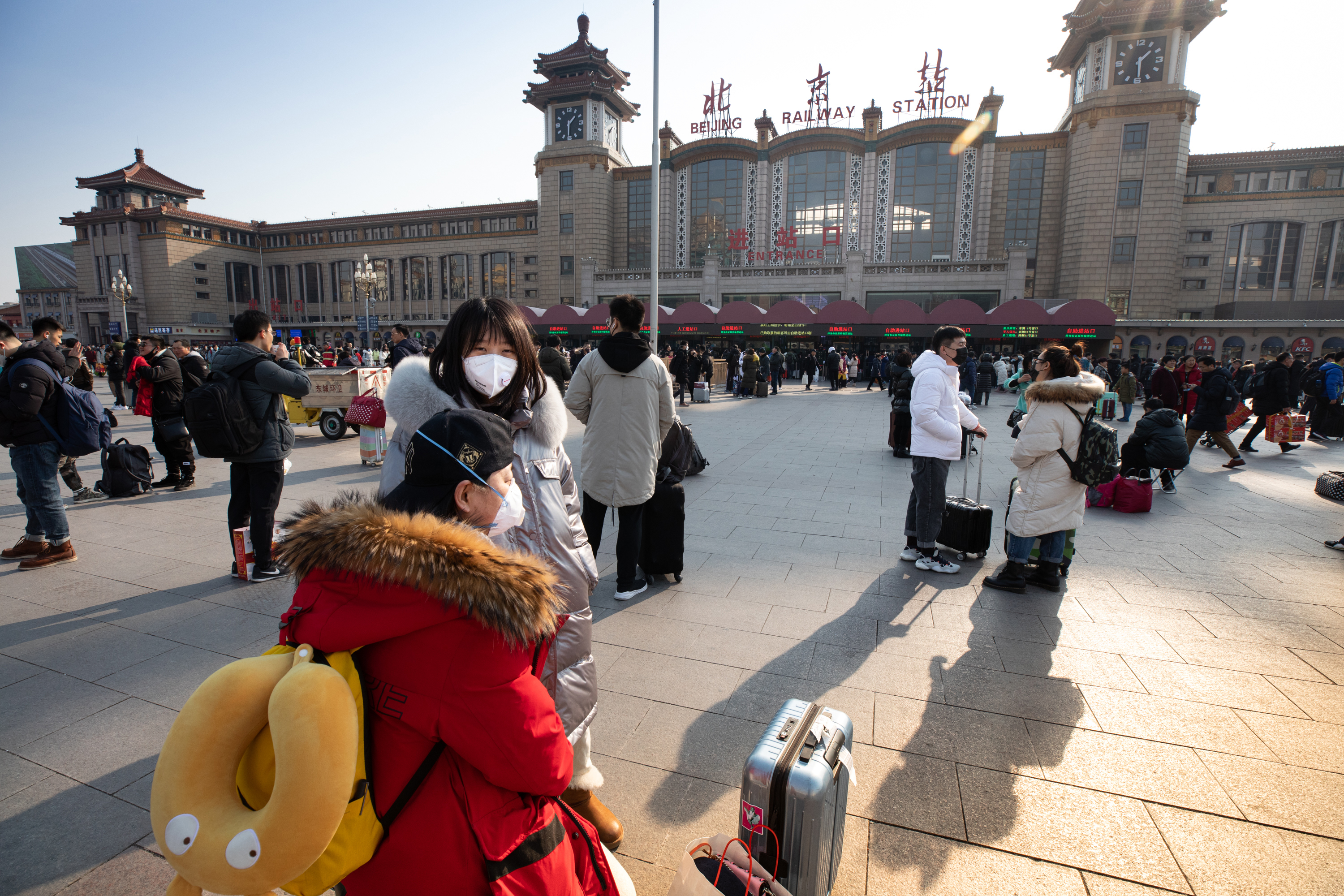
The first came from Dr. Li Wenliang, a 34-year-old ophthalmologist who alerted colleagues at the end of December of an unusually high number of cases of viral pneumonia similar to severe acute respiratory syndrome (SARS), apparently originating at a local wild animal market.
"Please warn your families to take precautions," Li posted on a medical chat group at the end of December, before being detained by police, accused of causing trouble online and forced to sign a document acknowledging he had "seriously disrupted social order." The state intimidated him into silence.
"They believed I was spreading rumours," he told the New York Times as he himself lay in hospital in early February, seriously ill with the virus. "I felt I was being wronged, but I had to accept it."
A week after that interview, Li was dead and the country was outraged. By this point, his warnings back in December seemed prescient and the government's efforts to suppress them dangerous and irresponsible.
"They owe you an apology, we owe you our gratitude," said a user named Xiakedao on Weibo, China's equivalent of Twitter.
Li was hailed as a hero in millions of messages on China's internet, so many that the country's army of censors couldn't erase them quickly enough. Not online nor on the streets, where tributes to Li showed up in graffiti and posters.
They were even carved in the snow. "Farewell, Li Wenliang!" read one message close to my apartment in the middle of Beijing.
"In the eyes of the people, Dr. Li was the hero who bravely told the truth."
The official response to COVID-19 was getting a very cold reception and the public's frustration was crystallized by grievances that went far beyond the virus — including freedom of speech.
On its Weibo page, the Chinese publication Economic Observer wrote that through his fate, Li told "what kind of future we will face if we lose the ability to express ourselves. In the eyes of the people, Dr. Li was the hero who bravely told the truth."
So overwhelming were the demands for justice that Beijing was ultimately forced to rehabilitate Li's image. An official investigation by the Communist Party of China's powerful anti-corruption committee exonerated him of "spreading false rumours" and he was later declared a "martyr" for his sacrifice as a front-line medical worker.
Still, Beijing rejected public chat group and media attempts to cast him as an "anti-establishment champion" or whistleblower, portraying him instead as a loyal member of the Communist Party.
Meanwhile, the calls for more openness and freedom — briefly popular on China's internet under hashtags like #Iwantfreedomofspeech — simply disappeared, erased by censors. Indeed, the virus's ability to infect China's political system with taboo ideas had limits.
It was a strange time to be in China. The country was the first to struggle to stop this disease. With no guidebook, it bounced from one extreme response to the other.
On one hand, police in Wuhan were welding people's doors shut to keep the sick (or suspected sick) from spreading the disease. Towns and villages all over the country unilaterally decided to insulate themselves from the outside world by putting up barricades or tearing up roads in panic.
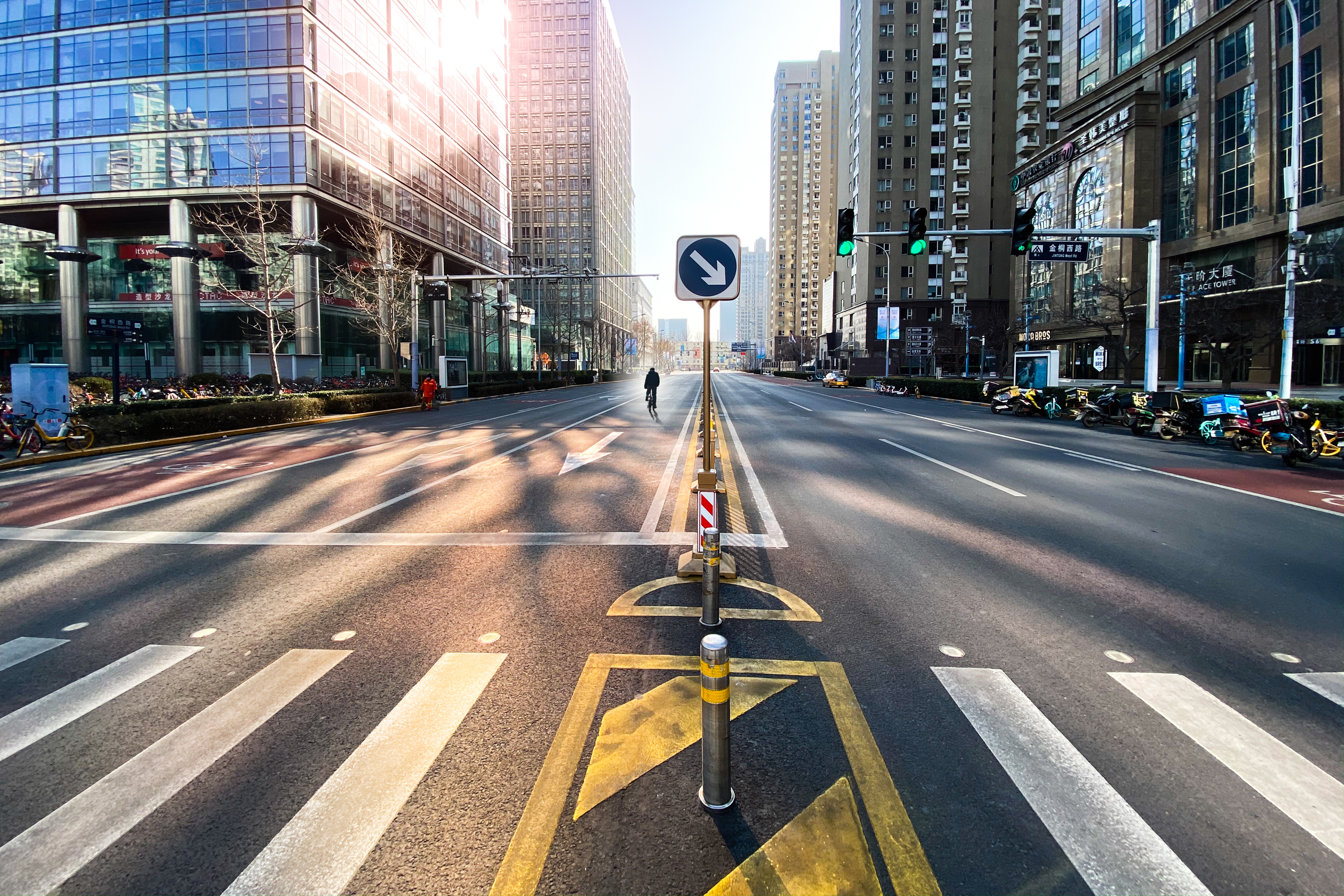
On the other hand, millions of Chinese were still traveling across the country to be with their families for the Lunar New Year holidays.
One morning in January, I rode my bike through Beijing's core to see what life looked like — down desolate six-lane boulevards, through an empty Tiananmen Square and past the normally thronged Forbidden City. In my time living there since 2016, the capital had become a comfortable and familiar place. It didn't feel like that anymore.
Overnight, the atmosphere had become a kind of enforced, artificial calm. Neighbourhood committees — the eyes, ears and rules-enforcers of the Chinese Communist Party — stood at the entrance of each residential compound. They wore red arm bands and carried clipboards with names and apartment numbers, as well as thermometers to check body temperatures of those coming and going.
In many cases, only one person per household could leave at any time, often for a limited period. I could see faces peering out of many windows. One couple I spoke to by video chat, Yingjie and her husband, Likun Liu, had sent their three-year-old son to stay with relatives in the countryside.
"We are bored and he is bored," said Yingjie Liu. "Is it safer there? I don't know. I guess these days there is no absolute safety from the virus in China."
"In any case, we have no choice anymore," she added.
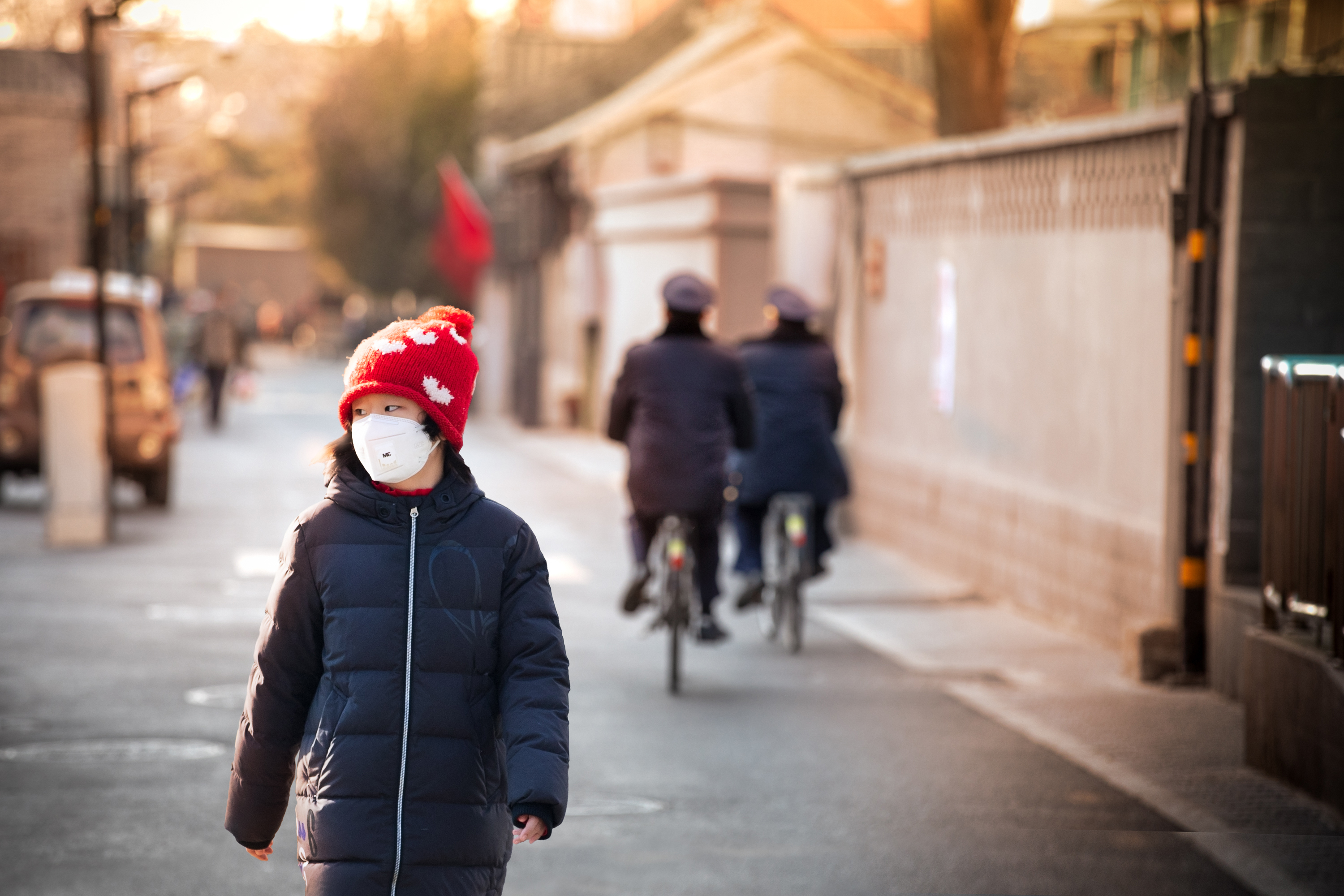
State media initially referred to the disease as the "Wuhan virus," suggesting it may be a phenomenon limited to an isolated corner of the country. Beijing even went so far as to chastise the West for cancelling flights and stopping travel from China, saying it was an overreaction.
The Chinese government later reversed its position on both of these points, indignantly calling out anyone who linked the virus to China as well as closing its own airports to foreigners.
At the start of February, no one really knew what they were dealing with — that COVID-19 would end up infecting more than 85,000 people in China, according to official numbers, and killing more than 4,600.
Nor did they realize the potential for a global pandemic that would infect more than 22 million and kill at least 750,000.
Less than a month after Beijing made the outbreak public, it was clear this virus wasn't going to stop at the borders of mainland China. I packed up to follow it on its progress elsewhere.
III.
My flight from Beijing to Hong Kong on Feb. 8 was almost empty, as was the huge Hong Kong airport when I arrived there. This was my first glimpse at the strange new world of international travel: at once dull and demanding and possibly dangerous to your health.
No one walked these terminals if they didn't have to. I was among the last to make it in before Hong Kong's new quarantine law took effect.
Simply travelling seemed to arouse suspicion from officials in masks and visors. They wanted to see passports and tickets, yes, but my real boarding pass was the mask on my face and a low body temperature. It was measured at every turn with a thermometer like a gun to my head.
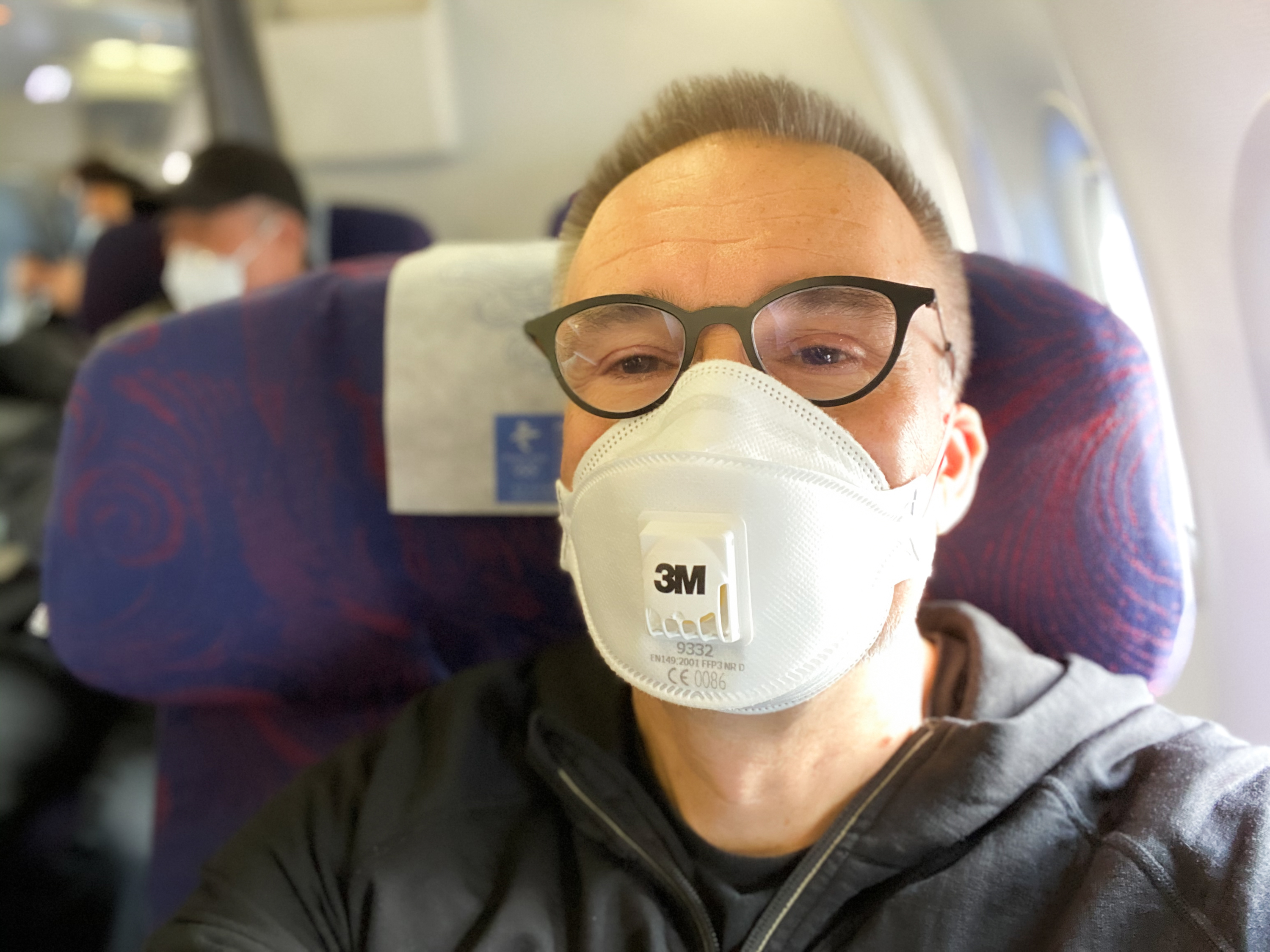
The Hong Kong I flew into seemed much more fixated on the virus than Beijing — and much more anxious about it. After all, this territory had experienced the deadly SARS virus in 2003, which had also been imported from across the border in mainland China. Back then, SARS swept through Hong Kong's densely packed high-rise apartments, infecting more than 1,700 people and killing almost 300.
In February 2020, it was a masked city, where the only people without face coverings were those who couldn't find any. People queued up all day in front of Hong Kong supermarkets and pharmacies in the hope of buying one or two. In one case, 10,000 people camped outside a drug store overnight after a rumour spread that a shipment had arrived. Others paid as much as $25 Cdn each for flimsy paper masks on the black market.
"Stop playing with our lives!" yelled one man waiting in line at a store in Kowloon, frustrated at the security guard who was keeping back the crowd. "My mother won't leave her apartment without one, and she's been stuck inside for a week!"
There was even more frustration at the government of Hong Kong, which was criticized for being slow to stop the entry of mainland Chinese.
Just as I arrived, thousands of people were on the streets for what would become the territory's largest-ever strike of health-care workers. As in China, the anger and desperation wasn't just about health. It was fuelled by months of political conflict in the territory, including street battles between police and protesters.
Indeed, one of the flashpoints was face masks.
As the pro-democracy demonstrations in Hong Kong that began in June 2019 intensified, so did police actions to end them. They declared virtually all protests illegal and resorted to mass arrests, frequently tracking people down using photos or CCTV camera images.
Masks became popular with protesters as a way to evade capture — until they, too, became illegal, after Carrie Lam, the Beijing-backed leader of Hong Kong, re-invoked antiquated emergency laws dating back to British rule of the territory.

In the fall of 2019, Lam argued masks could not be allowed because the people wearing them were "destroying the city." But in early 2020, it seemed the people wearing them just might save it.
Less than four months after she had banned masks, Lam was ridiculed when she showed up in one at a news conference to protect against the spread of COVID.
"That felt so good, seeing her forced to wear a mask," said Jerry Wong, a protester in his mid-twenties. "I wear one for my health, always, but there's also a feeling inside — it's hard to describe. I feel like I'm standing up to the government and to China every time I put it on and walk down the street now."
In fact, as I walked Hong Kong, I saw a kind of pride in the eyes of many here behind their mask.
Judy Yuen-man Siu, a researcher at the Hong Kong Polytechnic University, traced the roots of these "cultural meanings" back to the territory's experience with SARS. Siu called masks a "new social norm" adopted by the people she interviewed after the 2003 epidemic.
"Wearing a face mask was a sign of solidarity and civic responsibility," Siu said one 52-year-old woman told her. "You wanted to tell others that you were on the same team with other Hong Kongers." That you were doing your part to keep everyone safe.
Now, in August, many in Hong Kong worry about a new outbreak, and the government has imposed the strictest restrictions yet: Eat-in restaurants can only open for a couple of hours at lunch, gyms are closed, no public gatherings of more than two people.
The police have used this last restriction to further crack down on pro-democracy protests large and small, at a time when China is exerting its own authority more and more in Hong Kong. Measures to protect the health of the people and of the regime have become intertwined.
Many believe the mask-wearing tradition has kept COVID-related deaths in Hong Kong to about 80 (compared to more than 5,700 in Quebec, which has a similar-sized population).
It may well have kept me COVID-free until I left Hong Kong back in March — and flew into the newest hot spot of the pandemic: southern Europe.
IV.
My idea was to escape the worst of the spreading virus for a week or so by heading to Belgrade, Serbia, to visit friends and relatives. I wasn't counting on the coronavirus crisis going on in nearby Italy.
I arrived in the region just as Italy was imposing a nationwide lockdown. More than 130 people died that day, March 8. (The daily toll eventually rose to almost 800, and has totalled more than 35,000 dead.)
By contrast, life seemed delightfully — and deceptively — normal in Serbia, as it did in much of the rest of Europe at the time. Streets were full, restaurants open, outdoor markets bustling. Serbian government officials were dismissing COVID as the "funniest virus in history" — in other words, ridiculously insignificant. After all, official numbers showed only 24 people infected in this country of seven million.
It seemed a distant, unlikely threat. But like a hurricane on the horizon, it was bearing down on Belgrade.
The first ominous sign came four days after I arrived, when my neighbour Ana Danilović, a doctor at the Belgrade City Hospital, mentioned that the whole facility was suddenly being put on COVID alert.
"The virus is spreading and things are going to get much worse," said Danilović. "Of course, they're not testing enough, so we don't know."
The country's mood changed instantly, faster than anywhere else I'd seen. Borders started to close. Stores and restaurants emptied. Soldiers were sent to guard key medical facilities in a state of emergency that seemed more like a declaration of war against an invisible aggressor.
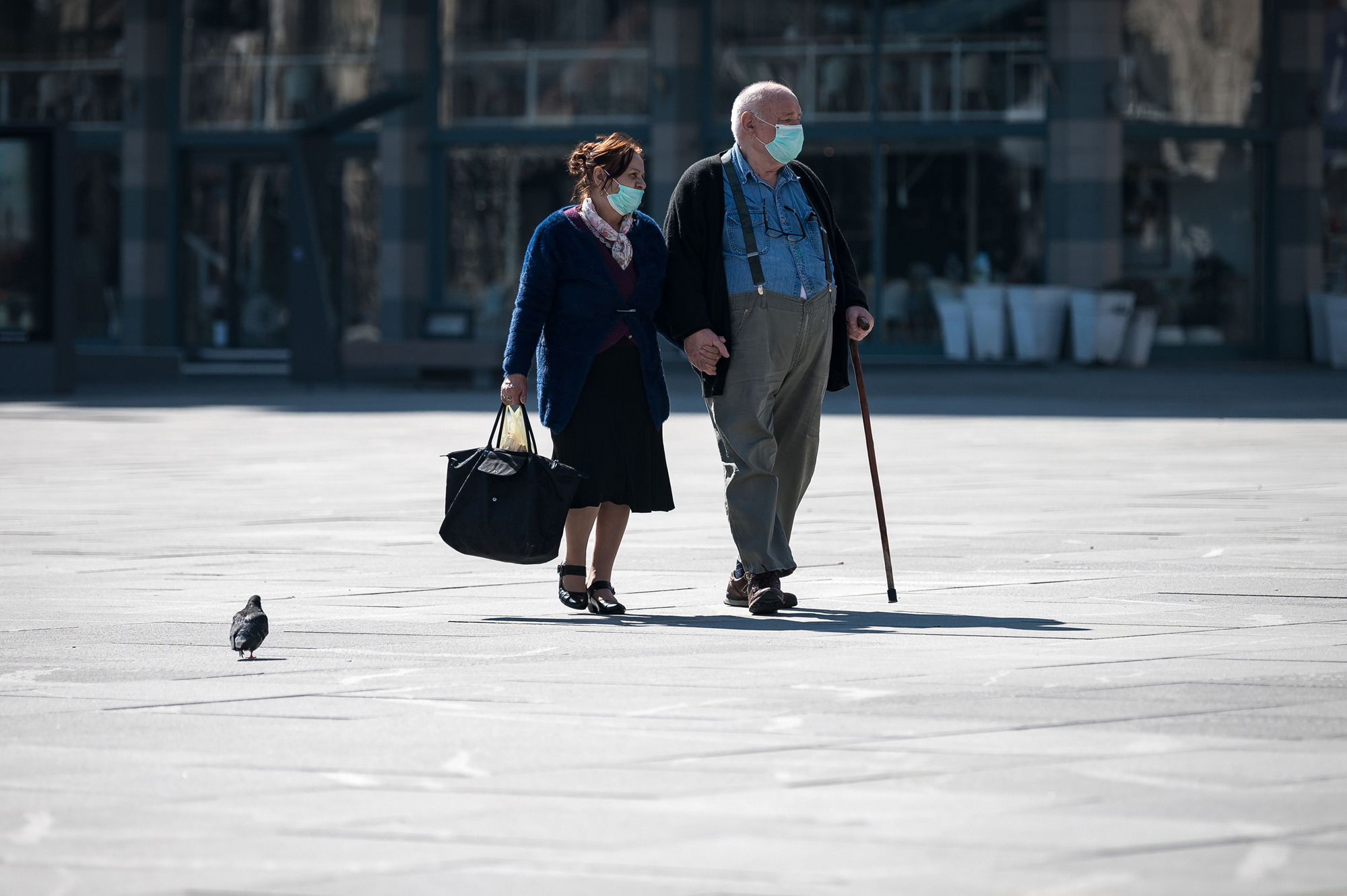
"From tomorrow, there is no more school, no nurseries, no universities, everything closes, no training or sports," announced President Aleksandar Vučić in a solemn TV address on the night of March 15. Seniors would not be allowed to leave their homes.
"We will close down to save our lives, to save our parents," Vučić said.
Friends who were casually sipping coffee at curbside cafes the day before turned suddenly frantic over where to quarantine their elderly parents — and, soon enough, themselves.
"The invasion is coming," said a produce seller at a market as he packed up carrots and cauliflower, comparing the coming pandemic to the NATO bombings that had traumatized Belgrade in 1999.
But Serbia's government was also playing politics with the pandemic, triggering what was to become one of the biggest and most violent public reactions in Europe to COVID-related safety measures.
By the time all of this had played out, I had left Belgrade — and went through my own scare. As I was rushing for the airport in mid-March, I said goodbye to my neighbour as she headed for work at the hospital.
"I'm worried," Danilović said.
She was concerned about the safety of her medical colleagues on the front lines, if there was enough protective equipment and if they would have access to tests. She also worried about her own health.
I made it onto one of the last flights out of Belgrade before the airport shut for a month. I was headed for Tokyo via Istanbul, two of a rapidly narrowing list of destinations that would still accept travellers from Europe. The day before, Hong Kong had closed its doors.
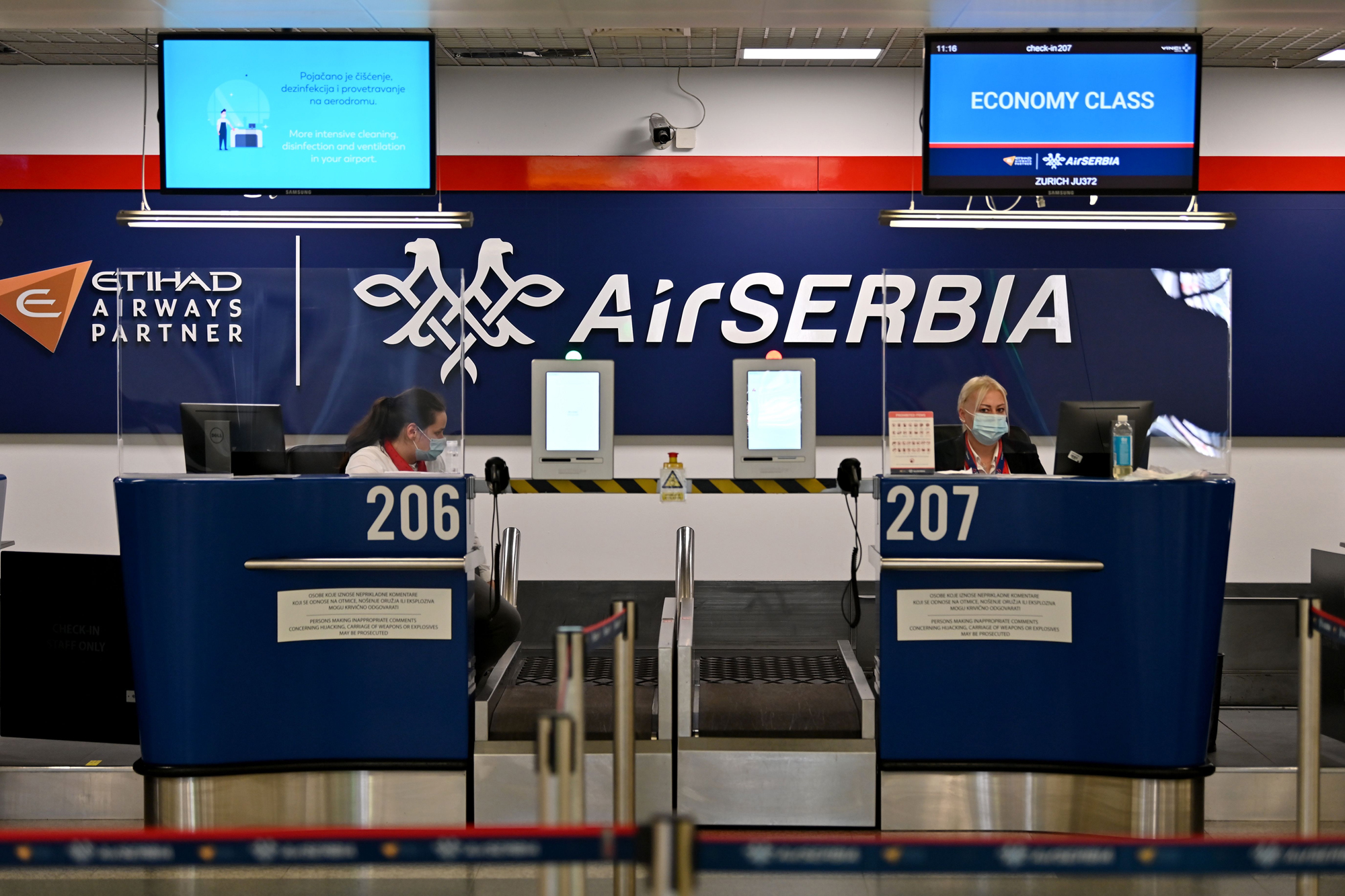
I felt like a COVID refugee, fleeing a virus that was sweeping yet another continent, leaving country after country in lockdown and uncertainty.
V.
"I feel awful, awful, awful," Danilović messaged me. "I don't want to feel helpless, and I feel like that now."
I had just arrived in Japan, and Danilović was waking up in Belgrade to severe body aches. "I knew someone would end up positive soon. I just didn't expect it to be me," she said.
She got tested within a day, but even before the results arrived, inside, as a doctor, she knew she had it. She put herself into quarantine to protect others.
Doctors and staff prevented the spread of COVID within the hospital, but protecting themselves was almost impossible.
"The virus is circulating so widely in the population that they assume everyone coming into the hospital has been exposed to it. Our colleagues are now continuing to work unless they actually have symptoms," she said.
Did I have the coronavirus? I had seen Danilović frequently while I was in Belgrade. I didn't have a high fever or any other signs, but it had only been a few days. And getting a test in Tokyo was virtually impossible. On arrival, no one was checking travellers' temperature or even asking about symptoms.
When it came to COVID, Japan seemed to be in its own world. It hadn't adopted any of the emerging wisdom for dealing with the pandemic. No mass testing like in South Korea. No sealed borders like in Taiwan. No heavy-handed lockdown like in China.
The situation in Japan was mild by European or North American standards, though nonetheless worrying.
"Many people are telling us, 'Just wait, you'll be like Italy or New York by next week,'" said Tomoya Saito, director of health crisis management at the National Institute of Public Health and an architect of Japan's unusual hands-off approach. "That is not our plan."
I found him in his office close to midnight on a Friday night in early April, following the rising infection numbers. With some 2,600 cases — about a fifth of Canada's at the time — the situation in Japan was mild by European or North American standards, though nonetheless worrying.
"We closely observed what was happening," said Saito. "We realized we can avoid the increase in cases like in China without a lockdown."
Saito described Japan's meticulous approach, which relied mainly on a kind of detective work that tried to control spread by attempting to track down the contacts of anyone who became infected. By quarantining these people, Tokyo hoped to keep the virus isolated.
Other measures — closing bars and restaurants, cancelling sporting events or wearing masks — mostly relied on suggestions from public health authorities and social pressure, not legal penalties.
"We are in a democratic society," said Saito. "We cannot take measures that are too strong."
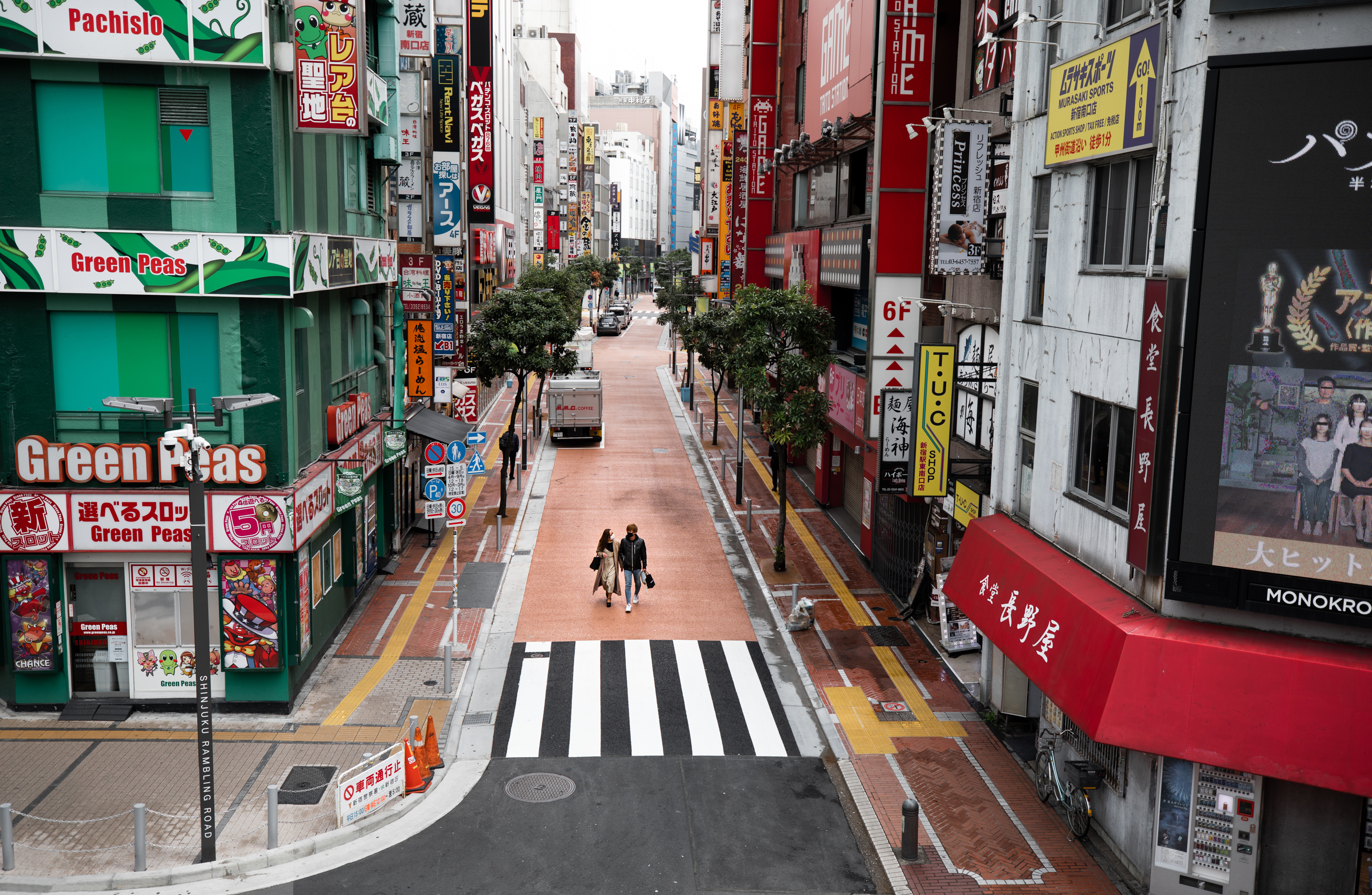
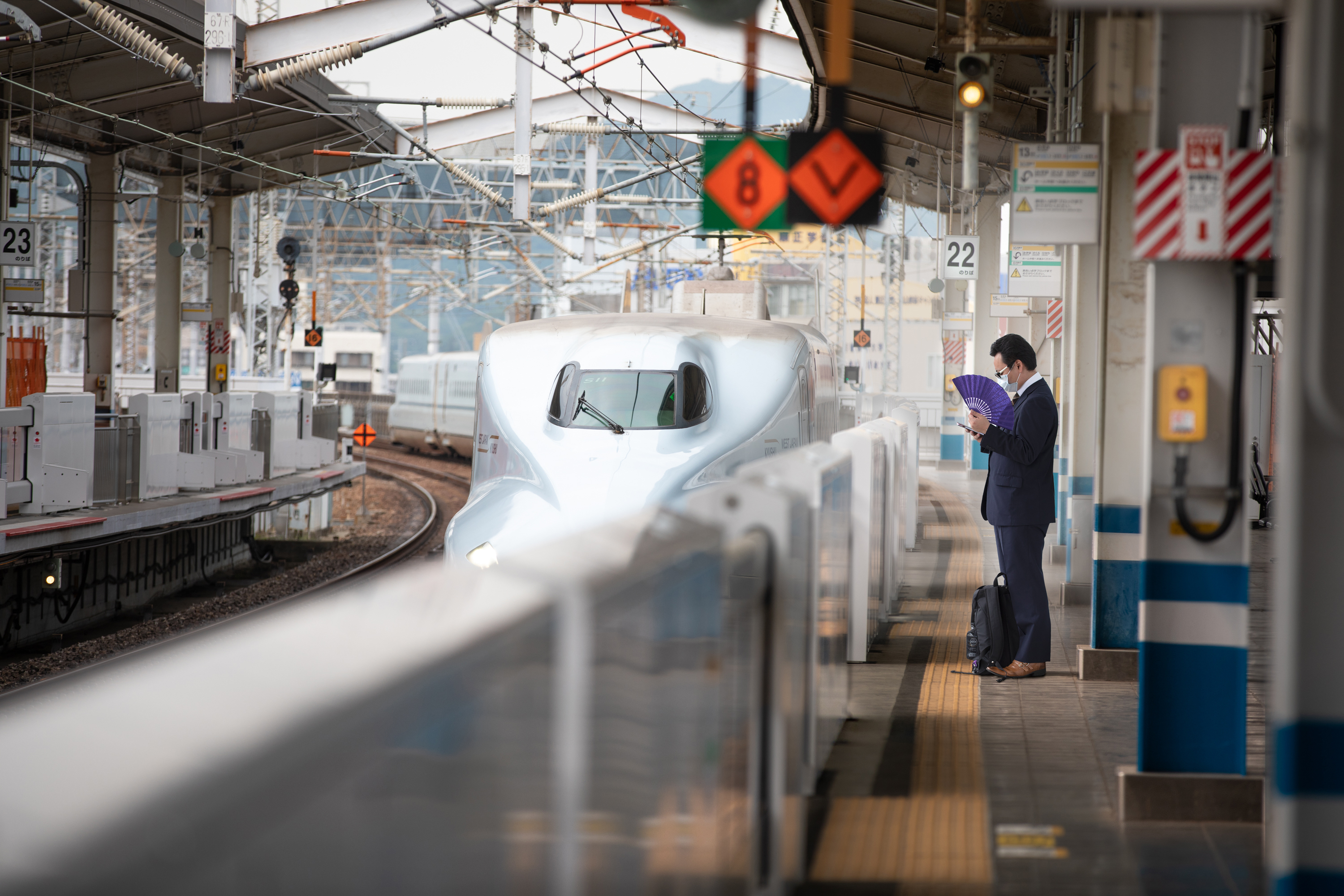
Many believed there was another reason, one that had little to do with COVID and everything to do with politics: the Tokyo 2020 Olympics. Well into March, Prime Minister Shinzo Abe insisted the Games would go ahead as planned. To do anything else would be a huge loss of political face, not to mention billions of dollars.
"We have to overcome the spread of the infection and want to hold the Olympics and Paralympics as planned," Abe told U.S. President Donald Trump on March 13. Days later, Abe would reverse himself, postponing the Games for a year.
Out on the streets of Tokyo, voters were way ahead of Abe. The virus was making them increasingly nervous and skeptical of government delays in declaring a state of emergency. They were distancing themselves from Abe's policies, and each other.
Unlike China or Serbia, Japan had not ordered its citizens to stay inside, nor had it threatened bars and restaurants with fines or jail if they did not close. And yet, people repudiated government inaction by doing exactly that, on their own.
I was no longer dodging pedestrians when I ran in the evenings. Sidewalks were becoming deserted. Even as the spectacular pale pink "sakura" cherries blossomed all over the country — an event that would normally bring out millions to marvel — not many came out to gawk.
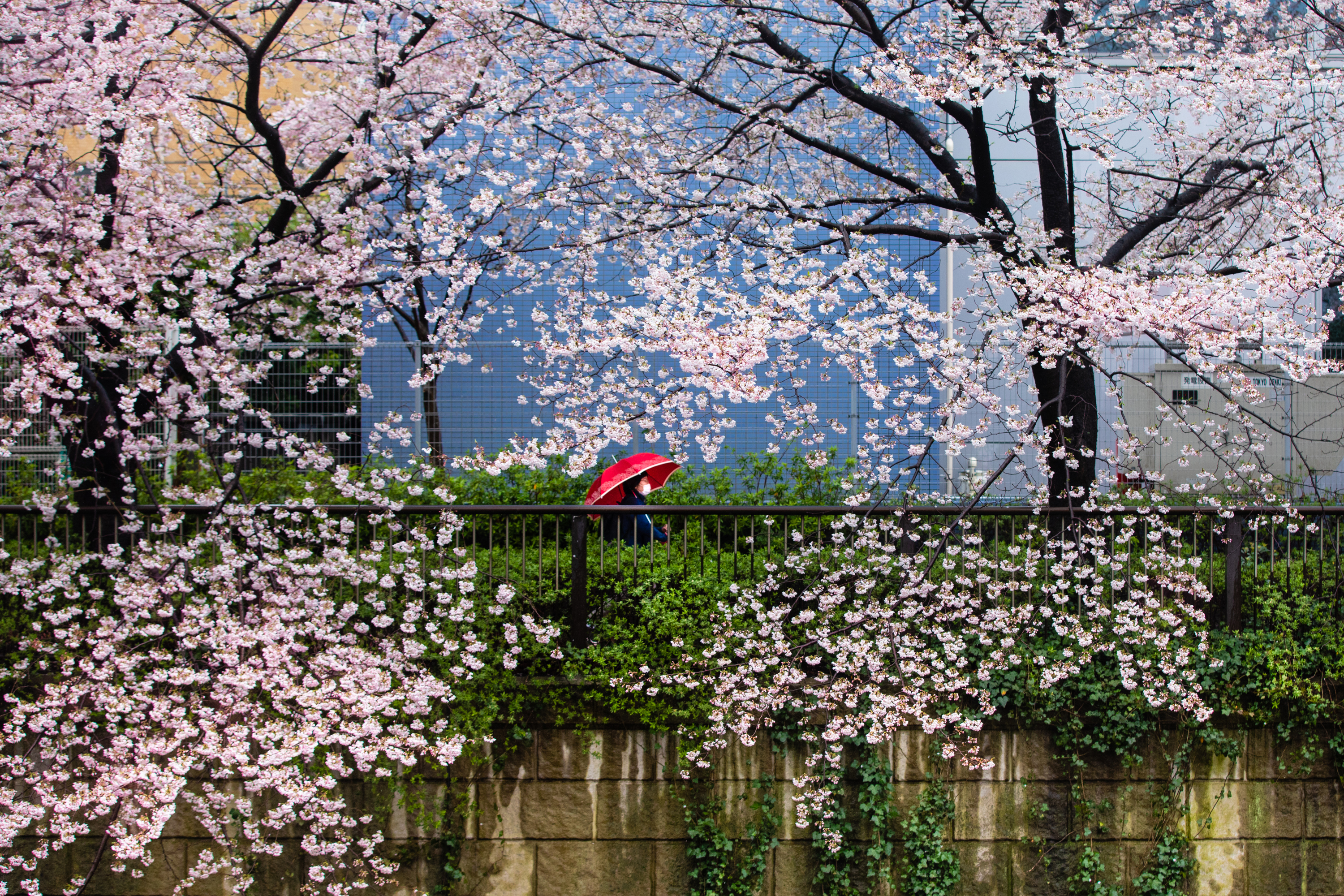
Hiroshi Ito was one of the few.
"I feel scared being out here. I know I shouldn't, but the flowers are so beautiful," said Ito, walking almost alone under a canopy of flowers.
"We should definitely be much, much more careful. This virus is dangerous," he said. "But we have been a little lucky."
I was beginning to feel like I had been lucky, too.
"I don't smell anything," my Belgrade neighbour messaged me one morning. "I opened a bottle of perfume and I couldn't smell anything."
At the end of March, Danilović was still feeling the symptoms of COVID, which included losing her sense of smell and taste.
"It's a feeling unlike any other," she said. "Doing anything at all totally wipes me out." She also had a warning for me: "Watch yourself. This thing is serious."
It would take another two weeks for her to test negative and to start to recover.
I never did come down with any symptoms.
Throughout this time, Serbia was going through its own convulsions.
After seven weeks of a tough, police-enforced lockdown in March and April — when at times even dogs could not go outside — Serbia's quarantine ended as suddenly as it had begun. Regular life resumed: the music started up in bars and cheering fans filled soccer stadiums — just in time for the beginning of campaigns for parliamentary elections in June.
Vučić's ruling coalition wanted a new mandate, and social distancing rules just wouldn't allow the kind of crowdsurfing antics candidates demanded. Once the election ended with a Vučić victory — and once it was clear that Serbia's infection numbers had skyrocketed — he tried to re-impose a lockdown.
But Serbs were having none of that. Outraged by Vučić's "political games," protesters besieged parliament night after night, demanding his resignation and an end to his increasingly authoritarian regime. Opposition leaders and media critical of the government are targeted regularly by the regime; corruption is considered common.
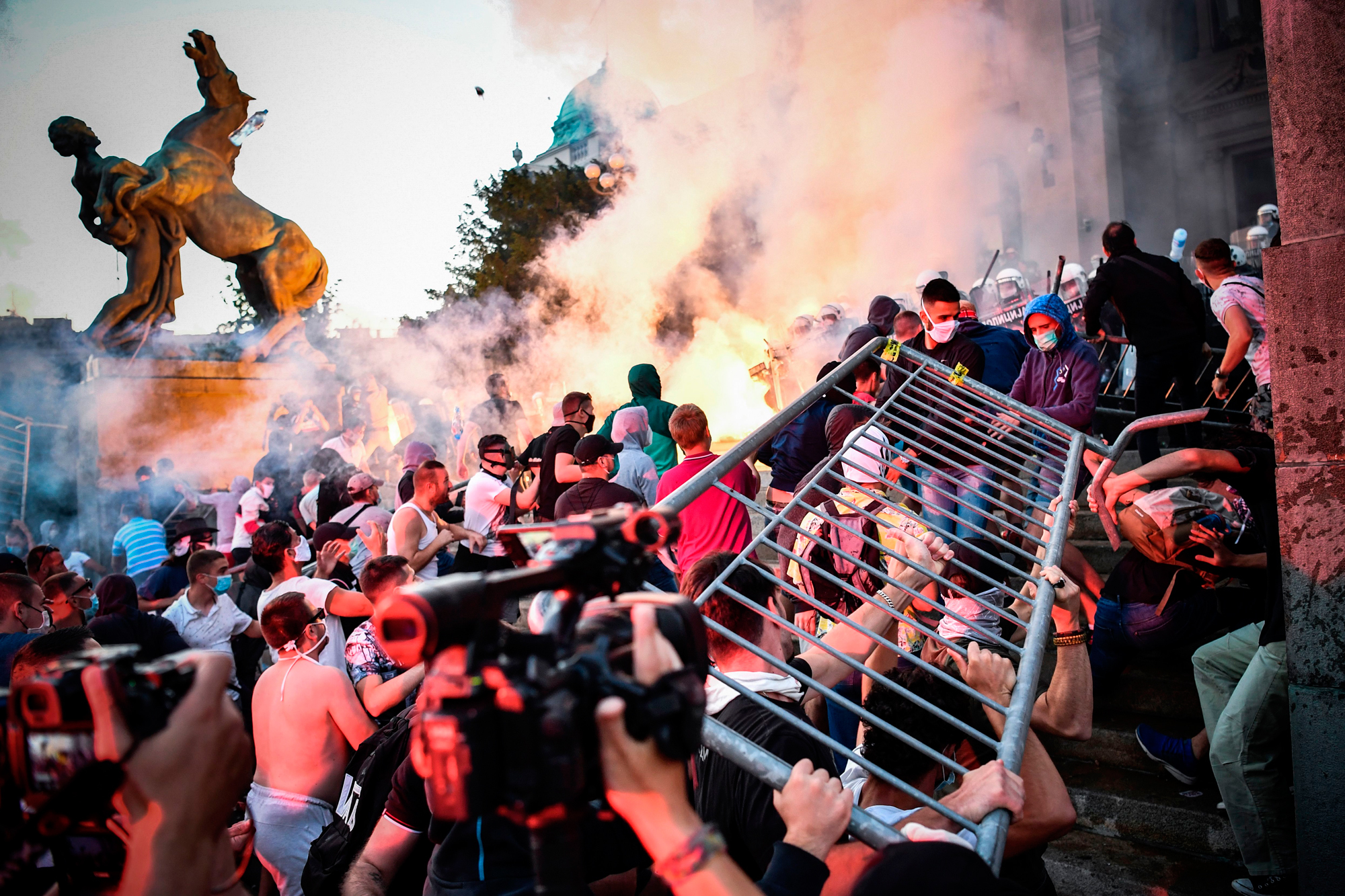
Over that week in mid-June, police responded with tear gas and stun grenades.
Vučić ended up backing down, and cancelling plans for a new lockdown. But his gambit seemed to have strengthened his political powers.
VI.
In early June, I walked through another deserted airport — Tokyo — and boarded an empty Air Canada flight to Vancouver. Quarantines and travel restrictions made travel between Japan and Canada difficult and unappealing. Cargo was the main reason the planes were flying at all.

On board, flight attendants in hazmat suits served bottled water and hand sanitizer.
I had been in Japan for three months, waiting for the world to open. Instead, it was shut tighter than ever. Even China, which had declared victory over the virus in March and celebrated Wuhan as COVID-free on April 26, later stopped most flights and barred foreign visitors from entering. Europe was closed to outsiders. So was Hong Kong.
Then, as now, Canada was keeping its borders sealed to all but a small number who had good reason to enter. At the border, immigration officers sternly warned me of fines of up to half a million dollars if I disobeyed a mandatory 14-day quarantine, and phoned regularly during the two weeks to check if I was staying home.
It seems every time I touched down in a different country, I saw public health hopelessly tangled with national politics.
Countries that downplayed the risks and resisted strict anti-COVID measures paid the biggest price. The United States has topped six million cases and more than 180,000 deaths. Brazil has more than 3.7 million cases and 118,000 deaths.
Hong Kong and Japan are still mostly closed to outsiders, while China and Europe are slowly opening up, with many limitations and frequent setbacks. Travel requirements can now change daily or even hourly.
COVID chased me from one country to another, and finally to quarantine in Canada. In a way, COVID chased all of us, pushing us to search for safety in our own socially distanced corners of the world.
Even as societies differ, the virus revealed that some things do not. All governments found themselves reaching for new powers to close borders and limit movement, track the infected and treat the sick.
But it seems every time I touched down in a different country, I saw public health hopelessly tangled with national politics — and public anger inevitably directed at those who were supposed to protect them.
It turned out to be one more symptom of COVID, a reaction of the body politic that is only likely to get more severe worldwide with each new wave of infection.
